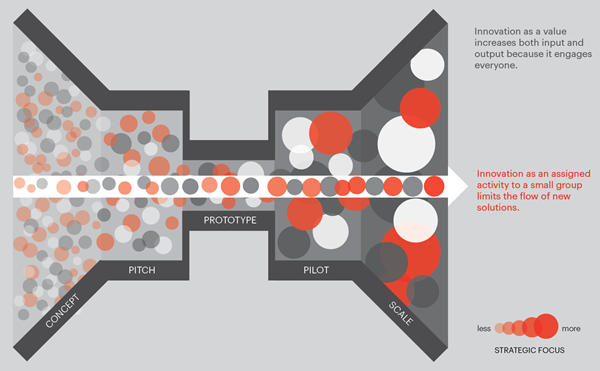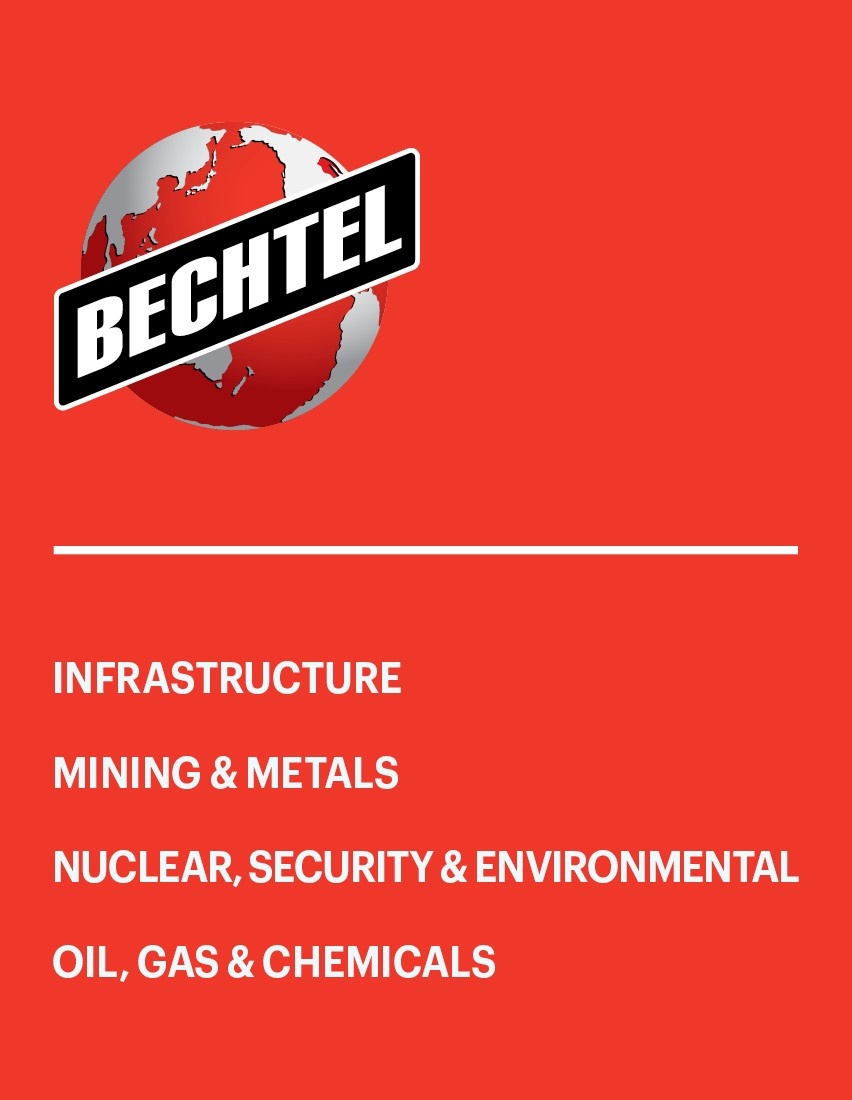Innovation As A Value, Not An Assignment
By: David Wilson, Chief Innovation Officer

When innovation is truly adopted as a value everyone in the organization will be encouraged to take ownership and an active interest in its evolution.
At Bechtel, innovation is clearly captured in in our Vision, Values, and Covenants, and like safety, quality, integrity, diversity, and inclusivity, it is widely regarded within our organization as everyone’s responsibility.
Our innovators are encouraged and empowered to experiment and develop new solutions. Everyone participates and is challenged, innovation is not left to be the job or assignment of a select few. This is important because when everyone is challenged to solve problems with innovative solutions, the whole organization moves forward at an accelerated and sustainable rate.
When not upheld as a value, innovation becomes transactional and shared ideas become only as good as the perceived value (monetary or social currency) exchanged with the innovator(s). This puts innovation at risk of becoming an activity that is outsourced, bought, or assigned to a single group and potential impact is constrained to the bandwidth or creativity of the team assigned.
Even though innovation is intellectually an easy concept to agree with, it’s not without challenges when it comes to implementation. Like any value, the desired behaviors associated with innovation must be communicated, reinforced, rewarded, and nurtured.
The following is an easy way to remember some of the most important components needed to advance innovation as a VALUE:
V: Validate employee engagement by encouraging any and all ideas be shared
The act of sharing unproven or potentially disruptive ideas can be a source of stress for employees in an organization. The first interaction with the organization for an idea originator can either stifle further engagement in the creative process or demonstrate and reinforce it’s safe to bring forth new ideas.
It’s possible that employees will be hesitant to bring forth ideas, because it may be perceived as out of scope or they may not have the technical expertise to fully realize their idea.
Encourage employees to lean-in and contribute by creating an environment where all ideas are worth hearing. It’s much easier to develop a genius idea from something seemingly impossible, than it is to push an incremental idea towards genius.
Take care to ensure the point of first contact for an innovator, when sharing a new idea with the organization, is positive and constructive.
A: Accept that not all innovations will succeed.
“How do you get to Carnegie Hall?”
“Practice.”
Celebrate structured learning and encourage early exploration, rapid validation, and accelerated scaling. To accomplish this, it’s important to have processes where discovery is wide, development is focused and rapid, and deployment is deep – so ideas can be quickly evaluated and either halted or continued efficiently.
An important part of success is realizing you probably won’t get it right the first time. You might even spend a few months on a concept only to realize it’s not going to work for the organization. That’s perfectly normal – document the learning and move on to the next idea, then the next, and then the next – keep the early learning cycles small, low cost, and quick, and then expand the investment as you see results. Explore in a sandbox to determine viability and then advance only proven mature innovations for adoption on projects – minimizing downside while maximizing speed and positive impact – learn safe, fast, and forward.
If an organization has a culture where fear of failure and over emphasis on immediate ROI overwhelms the spirit of exploration, only the ideas with a certainty of success will be pursued even from the outset.
Celebrate the learning and the willingness to try, but be concerned if the learning or failure becomes repetitive, as you may need to evaluate the effectiveness of your organizational learning framework.
L: Leverage existing corporate or organizational values to shape an innovative culture.
No need to start from scratch.
Every organization, regardless of its market, sector, or product, has documented values, governance models, controls, and incentives to reinforce the desired corporate culture. The familiarity of these programs can be used as a starting point to help advance innovation as a value.
As an example, at Bechtel, our organizational values our documented in the aforementioned VV&Cs, and include quality, safety, diversity and inclusion, and sustainability. Our colleagues understand these values are inherent to our culture and represent the default behaviors – we will always work safely, ethically, with high quality, and an emphasis on diversity, inclusivity, and sustainability.
To leverage these existing values, and because innovation is one of our VV&Cs, we actively make the connection in our communication to ensure everyone understands how innovation is related to each of the other articulated values.
Fully embraced values reinforce one-another and create virtuous cycles of positive behavior rather than tension and conflict; activities may be OR, but values are always AND.
U: Understand innovation doesn’t happen overnight.
The most problematic aspect of promoting innovation in a commercially driven environment comes down to one thing: Time.
Innovation is all about momentum, and momentum depends on engagement, space, and resources (money and time). If time and space can be intentionally created, and protected, your innovation program will thrive.
If innovation is relegated to an extracurricular activity, then it’s a hobby and not a value. Hobbies are wonderful, but rarely do they create competitive differentiators.
Make innovation a priority, where time is available to submit and engage in the ideation process, bandwidth is protected to develop and advance the most promising solutions, and early adopters are given the latitude to be first and second.
The very popular 20 percent may not be achievable in your market, but the beauty of time is that, even in small increments, it compounds when invested consistently and deliberately.
E: Enhance the quality of input by teaching employees how to think like an innovator.
I’ve suggested that all ideas are worth hearing. With that said, to truly succeed in fostering an innovative culture, it is necessary to help people ask the right questions and then generate progressively more innovative and insightful ideas.
Some people are inherently more creative, but that does not mean creativity cannot be developed and strengthened in everyone. Invest in programs like design thinking, ideation, brainstorming, art, tinkering, storytelling, etc. to prepare employees to innovate continually.
Innovation is everyone’s responsibility. When your teams are encouraged and understand this and the company culture supports it, they will help adapt, create, and accelerate a preferred future state soundly built on your organizational values.

